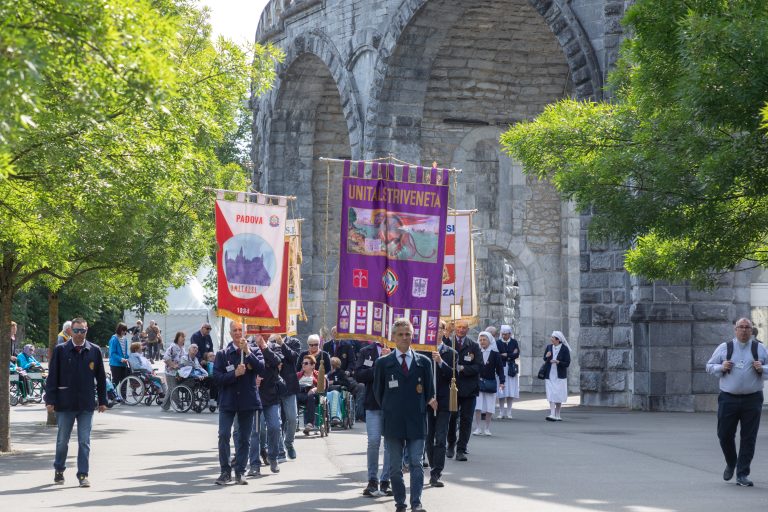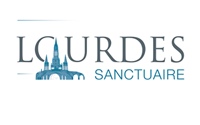Organised pilgrimages
in Lourdes
_________________
As an individual, any person can undertake a pilgrimage as a reminder of what the Church teaches: life on Earth is a pilgrimage that leads us to God. A pilgrimage undertaken by a group of believers or a religious community is a collective act that bears witness to the faith that guides its members.
History of pilgrimages to Lourdes
Since 11th February 1858, the day of the first apparition, the number of visitors to the Grotto has continued to increase.
‘Go and tell the priests that a chapel should be built here and that people should come here in procession.’
The first official pilgrimages began as soon as the Apparitions were recognised in 1862. These pilgrims came mainly from the Pyrenees and were organised by the local parishes. The first official pilgrimages began as soon as the Apparitions were recognised in 1862. These pilgrimages mainly came from the Pyrenees and were led by local parishes. The first of these, from Loubajac, visited the Grotto on 25th July 1864. The year 1866 marked an important milestone with the arrival of the Missionaries of the Immaculate Conception, who were responsible for organising pilgrimages. That same year, the crypt was blessed and worship at the Grotto of Massabielle was introduced. Finally, the first trains began arriving at Lourdes station, bringing large numbers of pilgrims.

Developing organisation of pilgrimages to Lourdes
In 1872, buoyed by the success of the first pilgrimage organised by the Association Notre-Dame de Salut à La Salette, a general council for pilgrimages was created.
Very early on, sick people were included in the pilgrimages. In order to provide them with suitable accommodation, the Daughters of Our Lady of Sorrows began building a hospital called ‘Our Lady of Sorrows’ in 1874. In 1885, the Hospitality of Our Lady of Lourdes was created to take care of these sick pilgrims when they arrived in Lourdes.
The first improvements were made to accommodate pilgrims: the course of the Gave river was pushed back to enlarge the space in front of the Grotto, and the first hostels were built.
In 1883, the Bureau of Medical Observations was established. It was run by Dr Saint-Maclou, who devoted himself to investigating the cures that were reported. It was not until 1938, when a decree from the Holy See encouraged pilgrimages, that the Association of Diocesan Pilgrimage Directors was set up to coordinate all the various initiatives. It became national in 1949, and the National Association of Diocesan Pilgrimage Directors (ANDDP) was then responsible for organising both the material and spiritual aspects of pilgrimages.
There are various types of pilgrimages in Lourdes:
• Diocesan pilgrimages: Lille, Middlesbrough, etc., organised under the guidance of their bishop and with their hospitality.
• Pilgrimage chains: Unitalsi, etc.
• Themed pilgrimages: herdsmen, motorcyclists, farmers, etc.
• National pilgrimages: Assumptionists (French National), Rosary, etc.
• ‘Themed’ pilgrimages: cowboys, motorcyclists, farmers, etc.
• National pilgrimages: Assumptionists (French National), Rosary, etc.
• International pilgrimages: PMI (International Military Pilgrimage), Order of Malta, etc.
• ‘One-off’ gatherings



